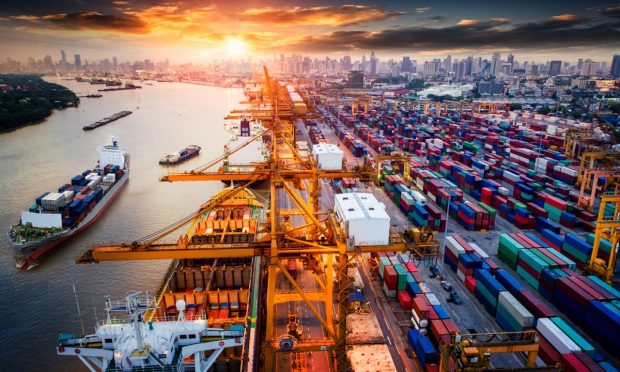
Intersections and inflection points are increasingly defining the industrial economy’s future.
Whether they are generational changing of the guards, behavioral-technical cross-points or a combination of the two, sectors pivotal to the global economy, like the supply chain and logistics space, are undergoing a slow but steady future-fit transformation.
The logistics sector in particular has experienced an accelerating digital revolution in recent years, driven by the need for increased efficiency, cost reduction and improved sustainability.
Investments in digital technologies, such as Internet of Things (IoT) devices, sensors and advanced analytics, have created an ecosystem that generates vast amounts of data at every stage of the supply chain journey. From tracking goods in transit to optimizing warehouse operations and intelligently matching shippers and carriers, the industry has become a data-rich environment.
Now, those digital investments are starting to mature, allowing companies to extract actionable insights and real-time value from the swathes of information at their disposal.
What’s more, another innovation — artificial intelligence — promises to help unlock the full potential of prior digital investments with its ability to analyze massive datasets, identify patterns and make data-driven predictions, ultimately providing real-time agility around the way their daily tasks and workflows are managed across the shipping, logistics and transport sector.
Digital transformation is about the physical world becoming an extension of the digital world, not a bolt-on or a separate channel that is the stutter step to the analog processes that define business today.
The synergy between mature digital investments and the growing volume of data has created the perfect storm for AI to make an impact in bringing this transformation to life.
“The Industrial 4.0 revolution was based on digitization, and it’s starting to mature now,” Prateek Kathpal, president and CEO of SymphonyAI Industrial, told PYMNTS in an interview posted Friday (Dec. 1).
“Artificial intelligence is based on data,” he added. “The more data you have, the better data you have, the cleaner data you have, then the better solution or a better output you’re going to get.”
From predictive maintenance to route optimization and beyond, layering AI tools atop the intelligent hardware surfacing real-time data will offer commercial players the capacity for enhanced customer experiences, increased efficiency and accessibility, and a more general streamlining of complex interactions previously spread out over distributors, warehouses, carriers and brokers.
“Since I began to work in this industry, things have rapidly evolved,” Raz Ronen, CEO at FreightTech startup Wisor.AI, told PYMNTS in an interview posted in June. “Five years ago, no one wanted to pick up your call or answer your email. Now, people are asking, ‘What is AI and how can it help?’”
Digital transformations have opened the door to a whole new context of value-added benefits for industrial players like richer and more actionable data, improved commercial relationships, cash visibility, customer support, freed-up labor, and a growing comfort and familiarity with effectively leveraging digital solutions, which is a necessity for success in the 21st century.
But one iceberg of legacy inertia remains: payments.
See also: From Tradition to Transformation: B2B Enterprises Hit Generational Inflection Point
No matter how streamlined an organization’s tech stack is, transacting across supply chains and among logistics network participants remains a bumpy road at best.
“We still have to have a lockbox for checks, you still have people out there doing things on carbon copy paper and writing it down, and the thing about payments is everyone still wants to do it every way,” Jordan Wagner, vice president and general manager at Torque by Ryder, told PYMNTS in an interview posted in July. “We’re really trying to get away from phone calls and checks, but the reality is that in this space, there are still plenty of people who want to do it the old-fashioned way. The old channels are still very, very prevalent,”
Pat Dillon, chief financial officer of logistics and freight transportation company Flock Freight, told PYMNTS in an interview posted in November that digitizing B2B payments unlocks a huge amount of upside within the transportation sector, which relies on a vast network of independent, and often fragmented and disparate, carriers.
“We operate in a highly transactional business in freight transportation, and so the volume of payments is quite high,” Dillon said. “And I think there is a good understanding and shared mission among all of the participants in the space, including some of the FinTech and payment providers, that better connectivity and visibility amongst the different participants goes beyond table stakes. It can actually be quite meaningful in terms of which partners you’re going to choose to work with.”
He added that the ability to predict when these carriers will be paid is crucial for building trust and efficient operations.
PYMNTS Intelligence found that modernizing financial infrastructure via automation and digital transformation initiatives is a way for businesses to remain viable in today’s competitive marketplace.
It isn’t just the transportation and logistics sector where this holds true, but the entire industrial economy.
Additional PYMNTS Intelligence found that construction firms are looking to technology to help them improve operations and build resilience. Thirty percent of such firms said they are investing in technology to save time and costs, according to “Building Better Cash Flow in Construction With Digital Payments,” a PYMNTS and American Express collaboration.
For all PYMNTS AI coverage, subscribe to the daily AI Newsletter.